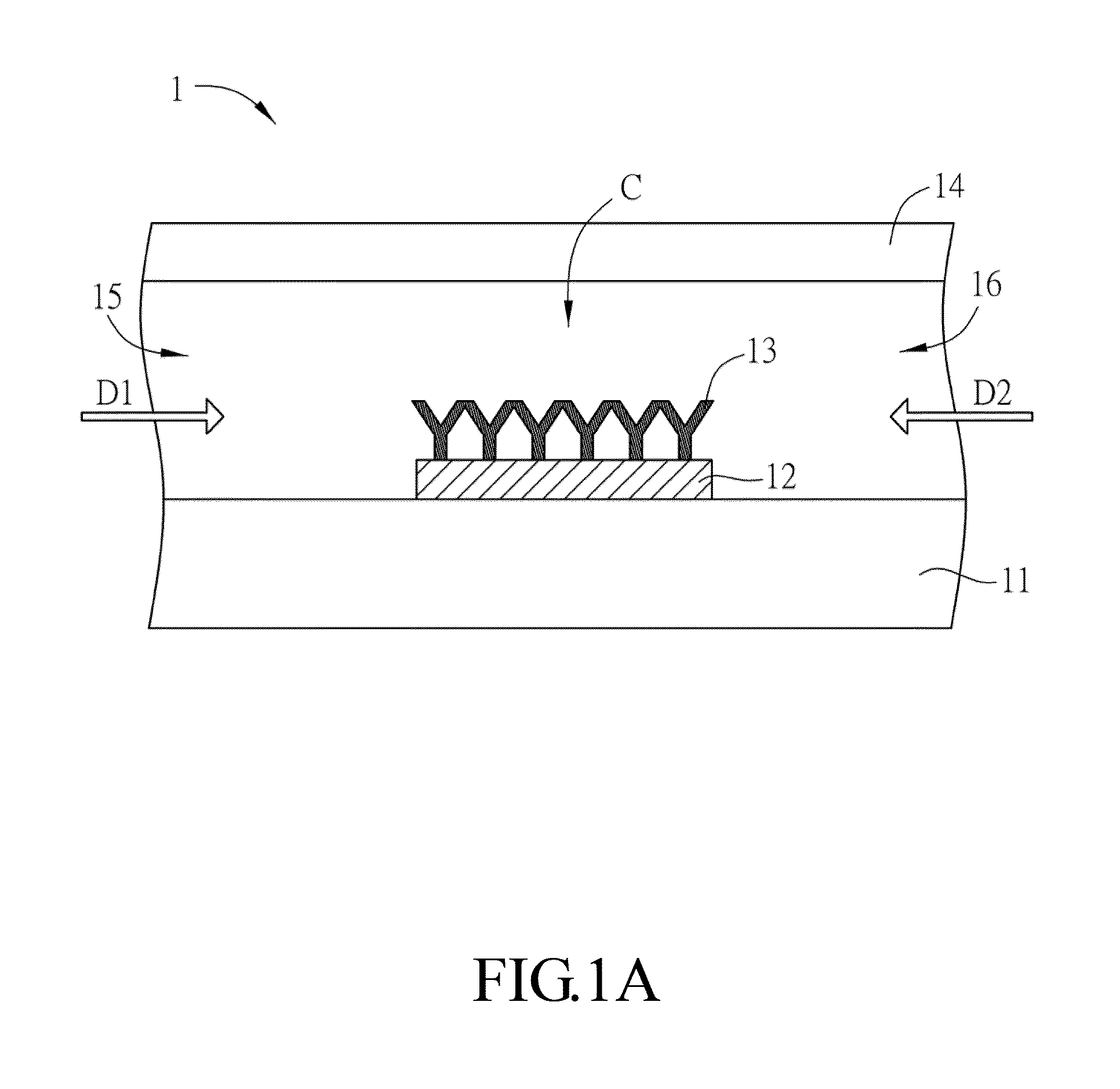Sensing device, and sensing system and sensing method using the same
a sensing device and sensing system technology, applied in the field of sensing devices and sensing systems, can solve the problems of increasing the overall assay cost, complicated instrument setup, and low sensitivity (nm), and achieving the optimization of target capture efficiency, low cost but still effective biosensing, and simplified operation protocol
- Summary
- Abstract
- Description
- Claims
- Application Information
AI Technical Summary
Benefits of technology
Problems solved by technology
Method used
Image
Examples
Embodiment Construction
[0048]The present invention will be apparent from the following detailed description, which proceeds with reference to the accompanying drawings, wherein the same references relate to the same elements.
[0049]The present invention provides a rapid and cost-effective nanofluidic based immuno-biosensor platform for real-time kinetic measurement of protein-protein binding, which is not for limit sense. With the combination of conventional bench top fluorescence detection system and reversed buffer flow, both association and dissociation kinetics can be accessed in one single experiment without rinsing buffer loading step, which is generally impractical for typical microfluidic based immunoassays.
[0050]In the present disclosure, a model based on finite element method is developed to quantify kinetic constants of two representative protein-ligand binding pairs: streptavidin-biotin and mouse IgG / anti-mouse IgG. The good agreement of extracted rate constants between the devices of the prese...
PUM
| Property | Measurement | Unit |
|---|---|---|
| length | aaaaa | aaaaa |
| length | aaaaa | aaaaa |
| length | aaaaa | aaaaa |
Abstract
Description
Claims
Application Information
 Login to View More
Login to View More - R&D
- Intellectual Property
- Life Sciences
- Materials
- Tech Scout
- Unparalleled Data Quality
- Higher Quality Content
- 60% Fewer Hallucinations
Browse by: Latest US Patents, China's latest patents, Technical Efficacy Thesaurus, Application Domain, Technology Topic, Popular Technical Reports.
© 2025 PatSnap. All rights reserved.Legal|Privacy policy|Modern Slavery Act Transparency Statement|Sitemap|About US| Contact US: help@patsnap.com



